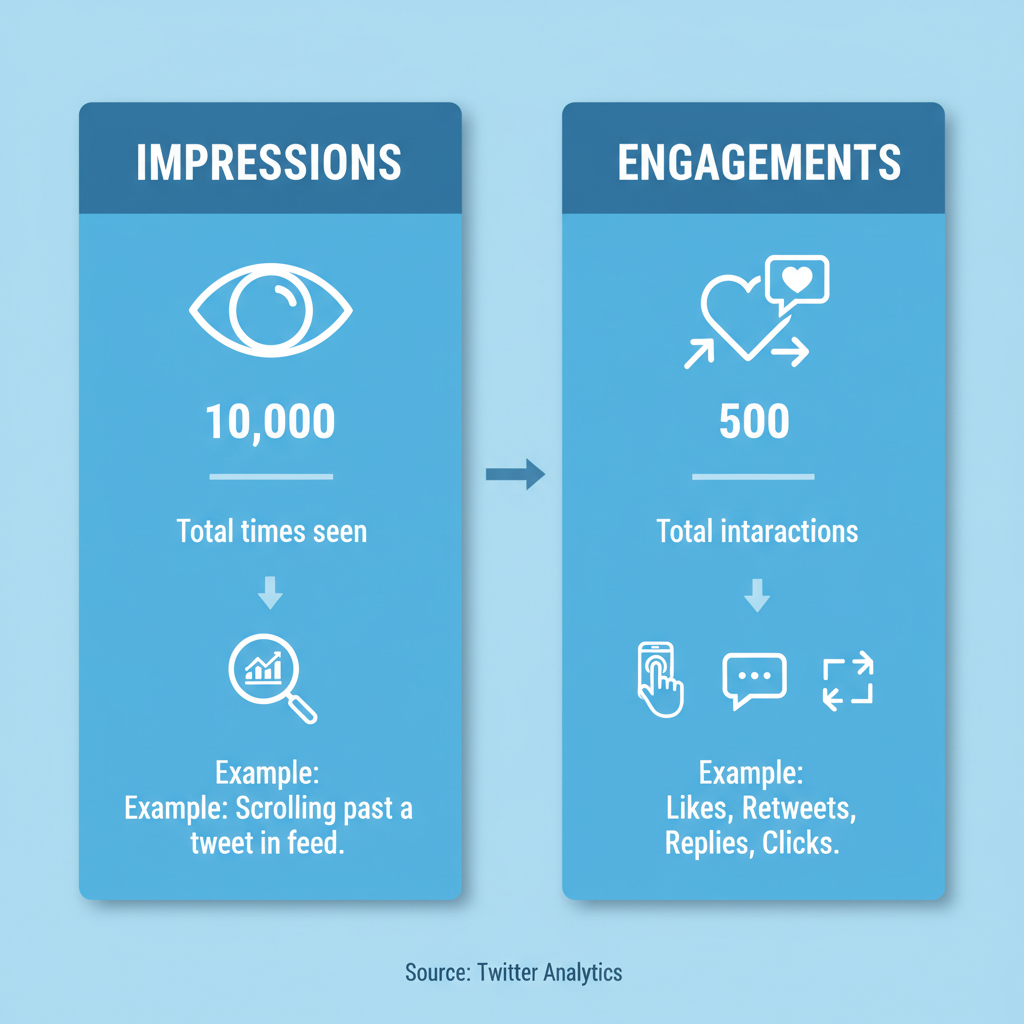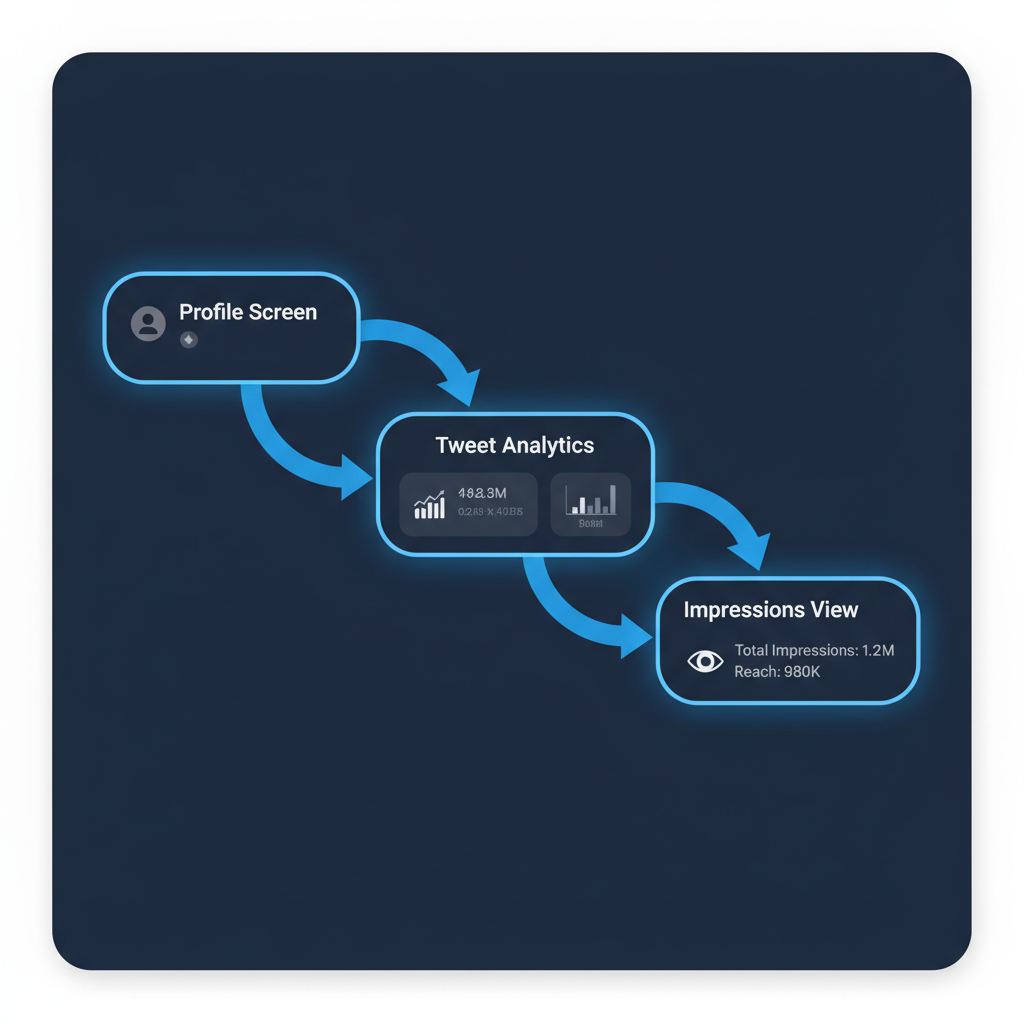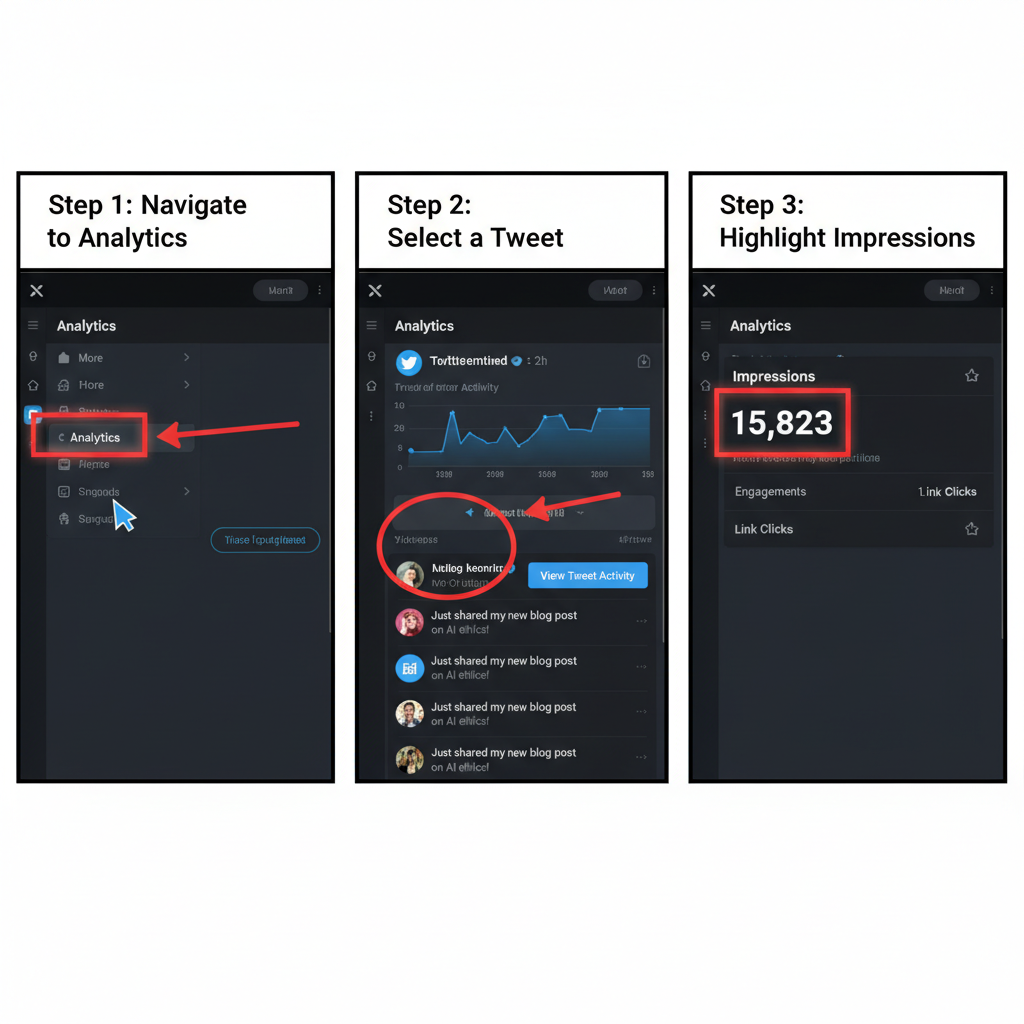How to View Impressions on Twitter Analytics
Learn how to view, compare, and interpret Twitter impressions on desktop and mobile, and use analytics to improve reach and engagement strategy.

Understanding Twitter Impressions for Better Social Media Results
In the world of social media marketing, Twitter impressions are a vital metric for measuring how often your tweets are seen by users. Whether your goal is brand awareness, community building, or driving website traffic, impressions give you an essential snapshot of visibility — the number of times your tweet appears in timelines, search results, or on profile pages.
By learning how to view and interpret impressions, you can refine your posting schedule, adjust your content types, and ultimately maximize your reach. Below, we cover the difference between impressions and engagements, how to access this data on desktop and mobile, and how to use it for strategic improvement.

---
Impression vs. Engagement: Understanding the Difference
Impressions and engagement often get confused, but they measure distinct aspects of Twitter performance.
Impressions:
- Count each instance a tweet is displayed on a user's screen.
- Do not require any interaction from the viewer.
Engagements:
- Include clicks, likes, replies, retweets, and media expansions.
- Show active participation and interest in your content.
| Metric | Definition | Importance |
|---|---|---|
| Impressions | Number of times tweets are displayed to users | Indicates visibility and reach |
| Engagements | Total actions taken on a tweet | Measures audience interaction |
| Engagement Rate | (Engagements ÷ Impressions) × 100 | Evaluates tweet effectiveness |
Keeping both metrics in mind helps you balance wide reach with meaningful interaction. High impressions but low engagement suggest your content is being seen, but may need adjustments to better connect with viewers.
---
How to View Impressions on Twitter (Desktop Analytics)
Desktop analytics tools make it easy for marketers to study Twitter impressions in detail.
Step-by-Step Guide
- Log in to Twitter using any desktop browser.
- Open Analytics: Click your profile image and select “Analytics” from the dropdown menu, or visit https://analytics.twitter.com.
- Select the Tweets Tab: View a calendar and metrics for individual tweets.
- Check the Impressions Column: Each tweet’s impressions are displayed here.
- Filter by Date Range: Narrow results to specific campaigns or timeframes.

Hovering over the daily chart can reveal impression spikes, often tied to trending hashtags, optimal posting times, or viral media posts.
---
Viewing Impressions via the Twitter Mobile App
For on-the-go tracking, Twitter’s mobile app provides a quick view of your impressions.
Step-by-Step Instructions
- Open the Twitter App and log in.
- Locate Your Tweet: Scroll through your profile to find the tweet of interest.
- Tap the Tweet to open detailed view.
- Tap “View Tweet Activity”: See impressions, engagements, and engagement rate.
- Swipe Down for further metrics like link clicks or media views.
This method is perfect for daily check-ins without needing the full desktop dashboard.
---
Interpreting Data in the Twitter Analytics Dashboard
Simply knowing impression counts isn’t enough — context is key.
Key Tips for Interpretation
- Compare to Engagement Rate: If high impressions lack engagement, your messaging may need tweaking.
- Spot Trends: See if certain hashtags, keywords, or posting times correlate with peak impressions.
- Align with Objectives: High impressions are especially useful when your primary goal is branding or awareness.
---
Tracking Impressions Over Time for Strategic Growth
Analyzing impressions across longer periods builds deeper insights.
Strategies:
- Export monthly Twitter Analytics reports (CSV format).
- Log results in a dedicated spreadsheet for trend analysis.
- Watch for seasonal, promotional, or campaign-based shifts in visibility.
This approach reveals patterns to guide long-term content and posting schedules.
---
Factors That Influence Impression Counts
Your impression numbers can be affected by multiple elements:
- Follower Count: Larger audiences see more of your tweets.
- Tweet Frequency: Consistent posting increases exposure opportunities.
- Hashtag Optimization: Use relevant, trending hashtags for better discovery.
- Engagement Boosts: Retweets and shares push tweets to new timelines.
- Platform Algorithm Changes: Twitter’s ranking system can alter visibility.
---
Organic vs. Promoted Impressions
Twitter impressions fall into two categories:
| Type | Source | When to Use |
|---|---|---|
| Organic Impressions | Unpaid tweets shown in timelines, searches, and profiles | Achieve reach without advertising spend |
| Promoted Impressions | Tweets delivered via paid Twitter ads | Boost campaigns or product launch visibility |
Knowing which type dominates your analytics helps you assess ROI and decide whether your budget is better spent on promotion or improving organic performance.
---
Optimizing Content Strategy Based on Impressions Data
Your impression stats can inform both timing and content type.
Tips:
- Publish during your audience’s peak online hours.
- Identify top-performing days from analytics data.
- Experiment with formats: images, poll tweets, videos, and long threads.

For example, if videos consistently deliver higher impressions, integrate more video content into your posting plan.
---
Privacy and Data Limitations of Twitter Analytics
While comprehensive, Twitter Analytics has boundaries:
- No Individual Viewer IDs: Data is aggregated.
- Impressions ≠ Unique Users: One person can trigger multiple impressions.
- Time-Limited History: Some metrics may only be available for a set period.
Always account for these constraints when drawing conclusions from impression counts.
---
Best Practices for Maximizing Twitter Impressions
- Balance Reach and Engagement: Views should lead to meaningful interaction.
- Set Benchmarks: Compare current performance to past activity.
- Refine Strategy Using Insights: Highlight hashtags or posting patterns that work.
- Test Multiple Formats: Alternate between text-only and rich media tweets.
- Stay Current with Trends: Participate in relevant trending topics.
Using impressions strategically allows you to expand audience scope, enhance engagement rates, and solidify your brand presence.
---
Summary & Next Steps
Learning how to view impressions on Twitter gives you the visibility data necessary to make informed content and scheduling decisions. By tracking these numbers over time, aligning them with engagement rates, and applying targeted optimizations, you can steadily improve your reach and impact.
Call to Action:
Start checking your impressions today — analyze, experiment, and adjust your content plan for peak visibility and performance on Twitter.




